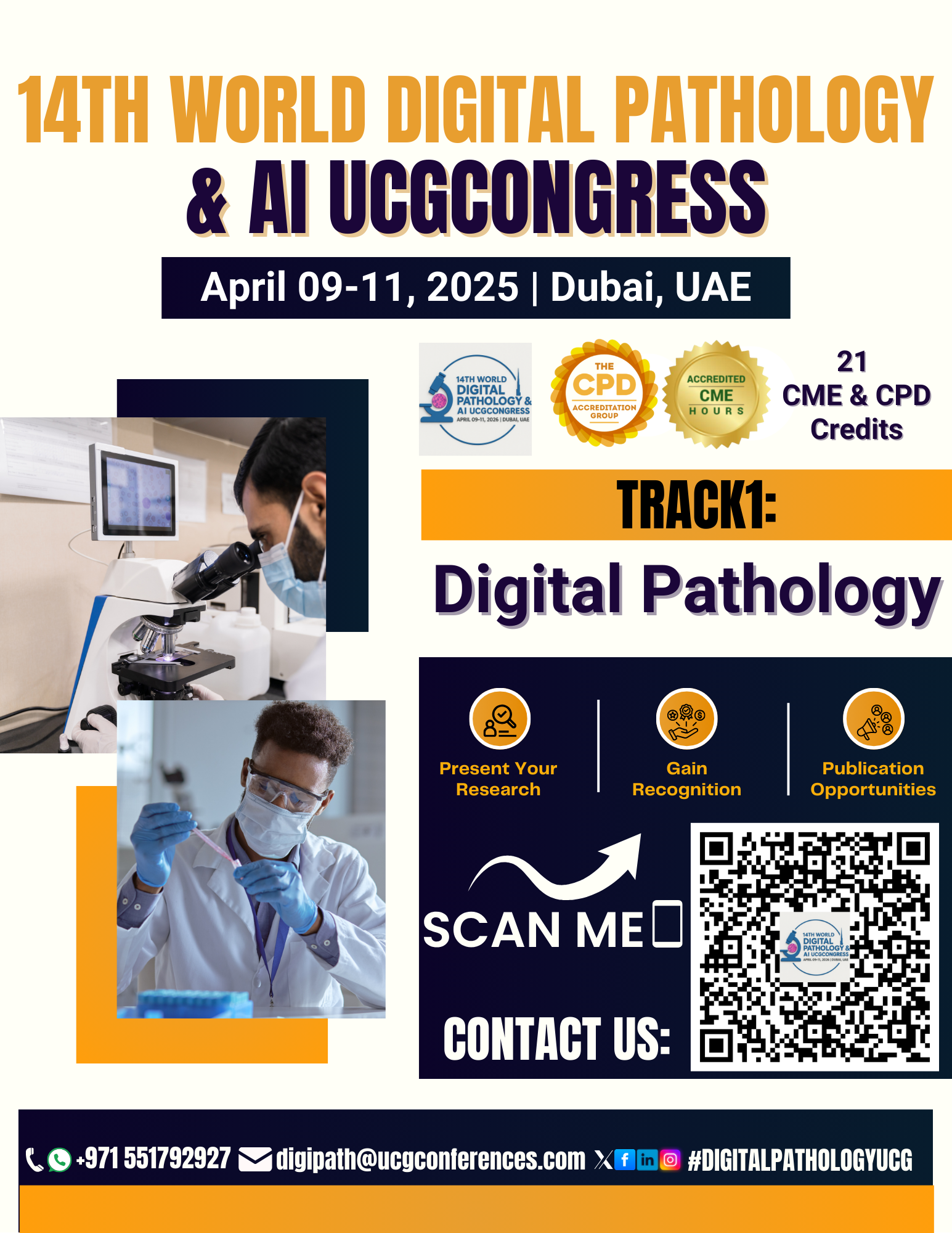



Sub track:-
Enhanced Image Quality Quantitative Analysis, Faster Turnaround Times,...

Sub track:-
Integration of Imaging Modalities, Advanced Image...

Track Overview:
Telepathology enables the remote transmission of
pathology images and diagnostic information, allowing pathologists to
collaborate across distances and provide timely consultations. This track will
explore the role of telepathology in modern healthcare, focusing on its
applications in remote diagnostics, consultation, education, and improving
access to pathology services, particularly in underserved or rural areas.
Attendees will learn about the technical aspects, challenges, and future
potential of telepathology in enhancing pathology services, improving patient
care, and integrating with other healthcare systems.
Key Topics:
Introduction to Telepathology: Understanding the
basics of telepathology, its history, and how it facilitates remote
consultations, diagnosis, and collaboration among pathologists.
Telepathology Systems and Technologies: Overview of
the technologies and systems that support telepathology, including digital
slide scanners, image transmission protocols, and cloud-based platforms.
Telepathology in Remote and Rural Healthcare: The
impact of telepathology in providing access to pathology services in
underserved or rural areas, helping bridge the gap in healthcare access.
Applications in Remote Diagnostics and Consultation:
How telepathology is used to offer remote second opinions, expert
consultations, and rapid diagnostics in various areas of pathology, including
cancer, infectious diseases, and rare conditions.
Integration with Electronic Health Records (EHR):
Exploring how telepathology systems can be integrated with EHRs and other
healthcare information systems for streamlined workflows and better patient
care coordination.
Telepathology in Education and Training: The role
of telepathology in medical education, enabling remote training, virtual
pathology classes, and enhancing learning experiences for pathology students
and residents.
Regulatory and Security Challenges: Discussing the
regulatory, privacy, and security issues associated with telepathology,
including compliance with healthcare standards such as HIPAA and the need for
secure data transmission.
Future Directions in Telepathology: Exploring the
future of telepathology, including advances in AI for remote diagnostics,
improving system interoperability, and expanding its use in global healthcare
initiatives.
Learning Objectives:
Understand the fundamentals of telepathology and
its role in enhancing remote diagnostics and pathology consultations.
Learn about the technologies that support
telepathology, including digital slide scanners, cloud platforms, and image
transmission systems.
Explore how telepathology is improving healthcare
access, particularly in rural or underserved regions.
Gain insights into the integration of telepathology
with electronic health records (EHRs) and other healthcare IT systems.
Understand the regulatory and security
considerations involved in telepathology, ensuring patient data privacy and
compliance.
Discuss the future innovations in telepathology,
including AI integration and the global expansion of telepathology services.
Target Audience:
Pathologists and clinicians involved in remote diagnostics
and consultations.
Healthcare administrators and IT professionals
interested in telepathology systems and technologies.
Researchers focused on the development and
enhancement of telepathology platforms and digital pathology.
Educators and trainers in pathology who are
utilizing telepathology for remote teaching and learning.
Policy experts and regulatory professionals
concerned with the privacy, security, and legal aspects of telepathology.
Speakers/Presenters:
Experts in telepathology, including pathologists
who have implemented telepathology in their clinical practice.
Researchers and developers working on telepathology
platforms and systems.
Healthcare administrators and IT professionals
discussing the integration of telepathology into healthcare settings.
Educational professionals using telepathology for
training purposes and remote pathology education.
Regulatory and legal experts addressing challenges
related to privacy, security, and healthcare compliance in telepathology.
Conclusion:
This track will provide a comprehensive understanding of telepathology’s current applications and future potential. Attendees will explore the technologies enabling remote diagnostics, the role of telepathology in improving healthcare access, particularly in rural areas, and the integration of telepathology into broader healthcare systems. The track will also address the challenges in telepathology, from regulatory issues to the future opportunities for telepathology to enhance healthcare delivery globally.